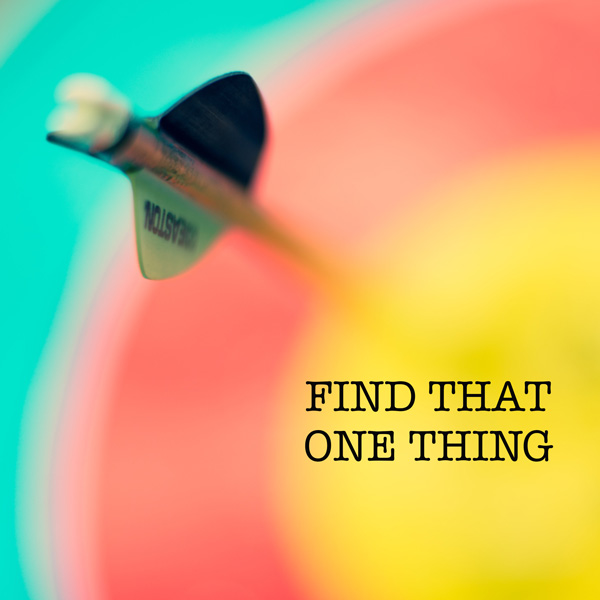JKLTip Decide on one passion to pursue by testing your top three ideas

This is an exciting part of learning to live your dream life. You have already reflected on dreams, strengths, and interests. But, in part four you’ll take the time to figure out one thing to focus on. Learning to test your ideas quickly is important in this step.
A common struggle for people after the first three steps is having too many ideas. It probably feels like you did all that work only to feel like you still have no idea what you want to do. There are a few ways to deal with this, but we’ll take a look at two: mind maps and testing.
Mind Maps
The first three parts of this project probably dug up a lot of ideas and information. It also may have taken a long time. We discussed them in three days, but they could take you six months to sort through. It could also be done in one day. Point being it is wise to get all of our findings in one spot.
So, take a piece of paper, and write “me” in the middle. Use your reflections from dreaming, strengths and interests to start building a mind map all about you. Start by connecting words by association. There are no wrong answers, write down whatever comes to mind.
Start putting more specific ideas on your mind map. For example, if you wrote photography as an interest, brainstorm possibilities around photography. You could write, “start a photo camp, specialize in baby portraits, become a wedding photographer”. Whatever it may be, it’s fun to start thinking of all of the possible action steps.
A Little Less Conversation, A Little More Action
Learning to test your ideas means the time to sit and think is over. This is the most exciting, but nerve-wracking part of the project so far. It’s time to put some ideas into action. Many of us go slow because we want to be prepared. This is why I started my JKL200 Project. I demonstrate how to try learning something new.
It can be valuable to be patient in life, but don’t confuse patience with inaction. If you have anxiety or perfectionist tendencies you will trick yourself into thinking that you are being productive by researching and planning. It is critical to get into the testing phase as soon as possible. So, what does that look like?
Individual differences will vary, because you might have identified one singular focus, such as a neurosurgeon, or basketball player. On the contrary, you might still have twenty things you want to try. This is where testing comes in.
Look at all of your ideas and get your list between one to three things you would like to try. Come up with your top one to three based on the gut feeling of your interest, or feasibility. Which ones get you most excited. And, make sure they are things you can start right now.
How To Start Testing
Now that you have one to three ideas, start putting them into practice. It really is as simple as trying them out. But, it may help to start with the one that is at the top of your list. Go with your gut, which one is getting you the most amped up? Start with that one.
Selective focus is valuable to the human experience because it ensures progress. Therefore, test your passions one at a time. You must remove anything that is not a priority. Our lives contain priorities of health, work, family and friends. Therefore, we only have room to add one more goal. So, choose and test one at a time.
How Long Do Tests Last?
Part of learning to test is making sure it starts right away. Start on a project you can do immediately. And, start with something you can do by yourself. This is key for two reasons.
One, it removes excuses. If we add a second party we create a need for communication and possible procrastination. There could be scheduling challenges or different priorities. It’s good to work with others but add these opportunities second.
On top of the main project, identify some other ways to test. This could be volunteering, joining a club, taking a class, following experts on social media, or starting another project.
You’re probably wondering how long to test for. Test the idea for a minimum of twenty and a maximum of two hundred dedicated hours. But, this is where a life coach can be really helpful. It’s such an intuitive and contextual answer that individual differences make a black and white plan impossible. Either way, you will work through these experiences while keeping a mental note of the pros and cons.
How To Track Testing
Disclaimer: If you do this for financial gain, there are additional metrics to test. We are simply identifying the passions you want to pursue. In a future post, we can discuss how to make a living from it.
The simplest way to measure how the experience is going is to list what is uniquely good and bad about it. Ask yourself questions about the experience such as:
- How does it make you feel?
- What do you enjoy?
- What do you dislike?
- Are you finding new related goals?
- What is surprising?
Learning to test your ideas can be challenging. There will be many ups and downs, so focus on the mantra “just keep learning”. Ultimately you are trying to answer a simple question.
“Which idea do you want to explore further? If the answer is none, go back to your original list and test the next idea. If there is one you want to keep running with, perhaps turn it into a career, then you are ready (finally I know) to start creating. Yay!